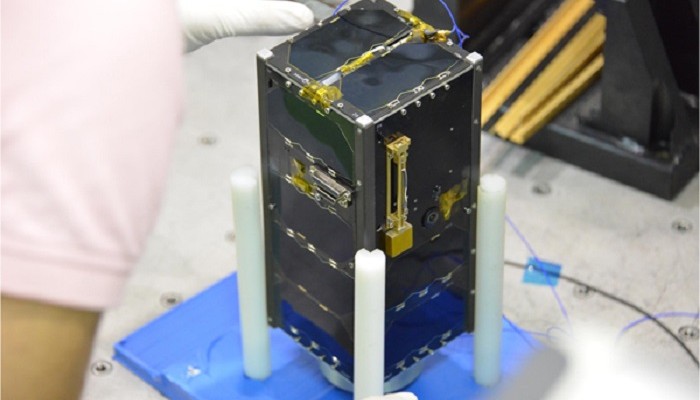
QB50 is an international project studying the properties of the low thermosphere. It consists on 36 nanosatellites that have been designed, developed and manufactured in 28 countries through research centers and universities. Among them, 28 were launched from the International Space Station (ISS) and 8 from the PSLV Indian launcher.
The Spanish Operations and Support Center (E-USOC / UPM) of the European Space Agency produced one of those nanosatellites. QBITO is its first CubeSat, a standard of small-sized sattellite (10x10x26 centimeters and 2kg), designed to ensure that its subsystems (power, thermal control, communications, etc.) are very versatile, reaching the requirements of several missions.
Using a CubeSat as platform for the mission allows a demonstration in orbit. This is, taking additional useful loads to be tested in a space environment for a reduced cost. In the case of QBITO, a NIT mid-wave infrared detector that does not require refrigeration is included.
As the other CubeSat forming the QB50 network, QBITO has the scientific mission to study the low thermosphere, which is hard to study because its density is too low for studies in aerospace balloons and too high to develop long lasting missions with satellites. A large portion of the high energy radiation coming from the Sun is absorbed in the thermosphere, the most harmful to the life of our planet. All CubeSat have identical sensors and their combination allows a multipoint data collection network. In its mission, during 6 months, QBITO will surround the Earth in a circular initial orbit of 420 km and 51 ° inclination, until it will disintegrate into the atmosphere at the end of its useful life.
The following link shows the launch to the orbit: http://bit.ly/2uJkwsv




 Ya tenemos la
Ya tenemos la 
 Pasaremos por Tenerife,…
Pasaremos por Tenerife,…